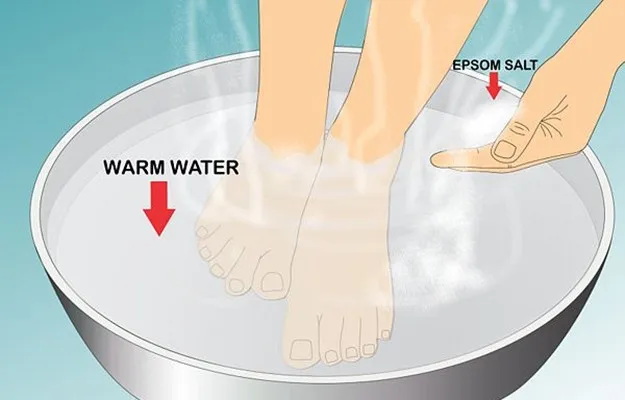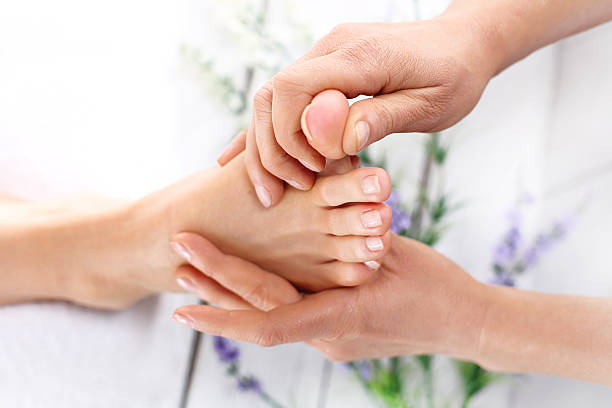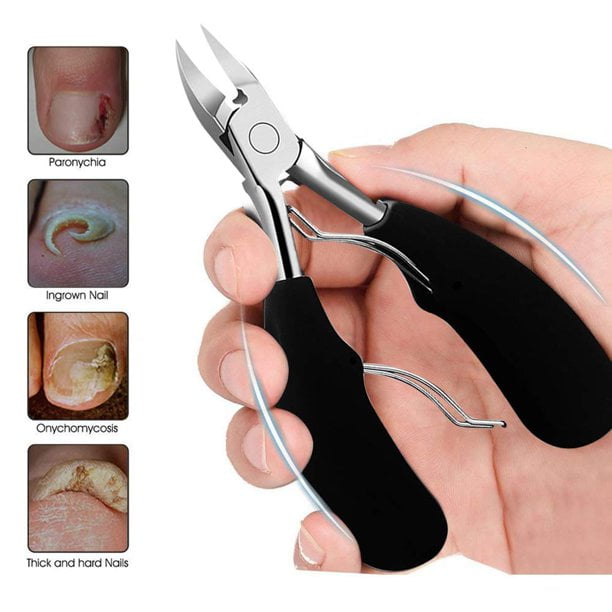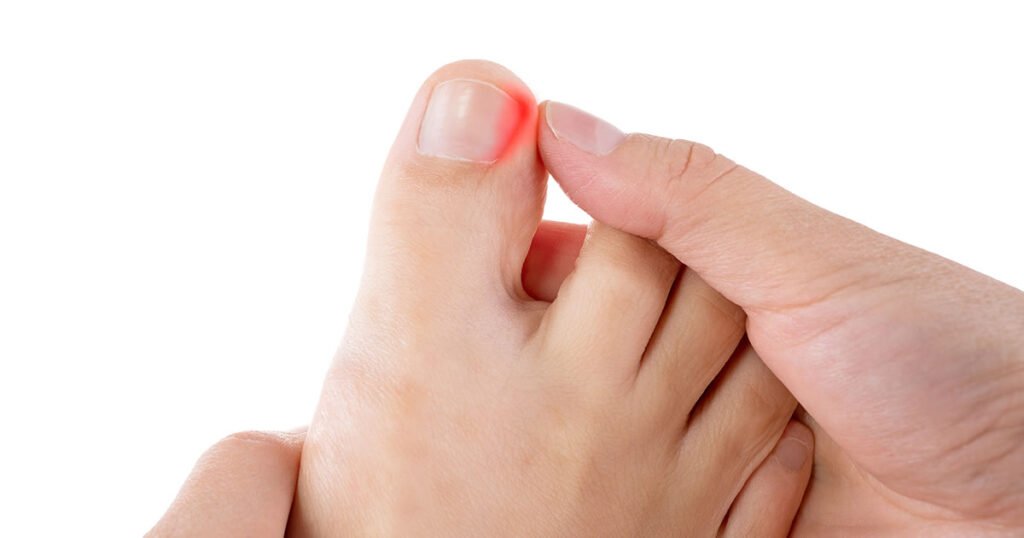Ingrown toenails can be a painful and frustrating condition, but there are many non-surgical treatments available to alleviate the symptoms and prevent the condition from worsening or to know how to fix ingrown toenail permanently.
Keep reading to know which are those options available out there:
Soak Affected Foot

Ingrown toenails can be a painful and frustrating condition, but soaking the affected foot in warm water can be an effective non-surgical treatment to alleviate symptoms and prevent the condition from worsening. Here is a step-by-step guide on how to properly soak your feet to remove an ingrown toenail.
Step 1: Gather materials
To begin, you will need a small basin or container large enough to comfortably fit your foot, warm water, and Epsom salt or a mild antiseptic solution.
Step 2: Prepare the water
Fill the basin or container with warm water, making sure that the temperature is comfortable to the touch but not too hot. If desired, you can add Epsom salt to the water to help reduce inflammation and soften the skin. If you have an infection you may want to add a mild antiseptic solution to the water.
Step 3: Soak your foot
Carefully place your affected foot into the warm water, making sure that the entire foot, including the ingrown toenail, is fully submerged.
Step 4: Relax and soak
Allow your foot to soak for 15-20 minutes. During this time, you can gently massage the skin around the affected nail to encourage it to grow out of the skin. This can be done using a cotton swab or a clean, soft toothbrush.
Step 5: Dry your foot
After soaking your foot, gently pat it dry with a clean towel. Do not rub the area around the ingrown toenail, as this can cause further irritation.
Step 6: Follow up treatment
It’s recommended to repeat this process at least twice a day, and in addition, it’s important to use a device called a “spacer” or “splint” which gently lifts the nail from the surrounding skin. This can be purchased at most drugstores or online.
Massage Affected Nail

Another non-surgical treatment is to gently massage the skin around the affected nail to encourage it to grow out of the skin. This can be done using a cotton swab or a clean, soft toothbrush.
To massage your feet, make sure that your foot is clean and dry before starting the massage. Gently massage the skin around the affected nail, being careful not to push too hard. You can use a cotton swab or a clean, soft toothbrush to do this. The goal is to encourage the nail to grow out of the skin, not to push it back into the skin.
Also, you can gently rub the nail itself in a circular motion to help loosen it from the surrounding skin. Repeat this process several times a day, or as often as needed. It’s recommended to repeat this process after soaking your foot, as the skin will be softer and more pliable.
Use a Spacer or Splint

A “spacer” or “splint” is a small, thin device that is used to treat ingrown toenails. The device is typically made of a flexible plastic or rubber material and is designed to be placed under the affected nail.
The device gently lifts the nail from the surrounding skin, allowing for proper growth and preventing the nail from digging into the skin.
This can help to alleviate pain and inflammation associated with ingrown toenails, and encourage the nail to grow out of the skin.
The spacer or splint can be worn all the time except when washing or soaking the foot, and it’s usually recommended to wear the device for at least 6 to 8 weeks, or until the ingrown toenail has grown out completely.
It’s important to follow the directions of the device and not to use it for an extended period of time as it can cause further damage to the nail.
It’s also important to note that using the spacer or splint alone may not be enough to completely treat the ingrown toenail and should be accompanied by proper hygiene, foot soaking and massaging the skin around the affected nail to encourage it to grow out of the skin.
Use Swissklip Heavy Duty Toenail Clipper

Swissklip Heavy Duty Toenail Clipper is a special type of clipper designed to help prevent and treat ingrown toenails. The clipper has a unique angled cutting edge that allows for a more precise and safe cutting of the nails.
When using your Swissklip Toenail Clipper, place it at a 45-degree angle to the nail and cut the nails straight across. Avoid cutting them too short, as this can lead to ingrown toenails.
The Swissklip Toenail Clipper is a special type of clipper designed to help prevent and treat ingrown toenails, by cutting the nails at an angle that allows for a more precise and safe cutting of the nails.
Be Consistent
It’s important to be consistent with the process and to follow proper foot hygiene to help prevent the recurrence of ingrown toenails.
Maintain Foot Hygiene

In addition to these treatments, it is important to maintain proper foot hygiene. This includes keeping the feet clean and dry, wearing clean, dry socks and shoes, and cutting nails straight across, avoiding cutting them too short.
Additionally, over-the-counter pain relievers, such as ibuprofen or acetaminophen, can be used to alleviate pain and reduce inflammation.
In some cases, a person might consider consulting with a podiatrist for more severe or recurrent cases of ingrown toenails to discuss further treatment options.
Ingrown toenails can be a painful and frustrating condition, but with the right non-surgical treatments, it is possible to alleviate the symptoms and prevent the condition from worsening.


